
Cabaret (English: /kæb??re?/) is a form of theatrical entertainment featuring music, song, dance, recitation, or drama. It is mainly distinguished by the performance venue, which might be a pub, a restaurant or a nightclub with a stage for performances. The audience, often dining or drinking, does not typically dance but usually sits at tables. Performances are usually introduced by a master of ceremonies or MC. The entertainment, as done by an ensemble of actors and according to its European origins, is often (but not always) oriented towards adult audiences and of a clearly underground nature. In the United States striptease, burlesque, drag shows, or a solo vocalist with a pianist, as well as the venues which offer this entertainment, are often advertised as cabarets.
Contents
Etymology
The word cabaret was first used in 1655. It is derived from tavern probably from Middle Dutch cambret. The word cabaret came to mean "a restaurant or night club" by 1912.
By country
French cabaret (from 16th century)
Cabarets existed in Paris in the 16th century; they were ancestors of the modern restaurant. Unlike taverns they sold wine not by itself but only with a meal, presented on a tablecloth. Customers might sing if they had drunk enough wine, but early cabarets did not have formal programs of entertainment. Cabarets were frequently used as meeting places for writers and artists. Writers such as La Fontaine, Moliere and Jean Racine were known to frequent a cabaret called the Mouton Blanc on rue du Vieux-Colombier, and later the Croix de Lorraine on the modern rue Bourg-Tibourg. In 1773 French poets, painters, musicians and writers began to meet in a cabaret called Le Caveau on rue de Buci, where they composed and sang songs. The Caveau continued until 1816, when it was forced to close because its clients wrote songs mocking the royal government.
In the 18th century the café-concert or café-chantant appeared, which offered food along with music, singers, or magicians. The most famous was the Cafe des Aveugles in the cellars of the Palais-Royal, which had a small orchestra of blind musicians. In the early 19th century many cafés-chantants appeared around the city; the most famous were the Café des Ambassadeurs (1843) on the Champs-Élysées and the Eldorado (1858) on boulevard Strasbourg. By 1900, there were more than 150 cafés-chantants in Paris. The first cabaret in the modern sense was Le Chat Noir in the Bohemian neighborhood of Montmartre, created in 1881 by Rodolphe Salis, a theatrical agent and entrepreneur. It combined music and other entertainment with political commentary and satire. The Chat Noir brought together the wealthy and famous of Paris with the Bohemians and artists of Montmartre and the Pigalle. Its clientele was described by the historian Paul Bourget: "a fantastic mixture of writers and painters, of journalists and students, of employees and high-livers, as well as models, prostitutes and true grand dames searching for exotic experiences." The host was Salis himself, calling himself a gentleman-cabaretier; he began each show with a monologue mocking the wealthy, ridiculing the deputies of the National Assembly, and making jokes about the events of the day. The cabaret was too small for the crowds trying to get in; at midnight on June 10, 1885 Salis and his customers paraded down the street to a larger new club at 12 rue de Laval, which had a decor described as "A sort of Beirut with Chinese influences." The composer Eric Satie, after finishing his studies at the Conservatory, earned his living playing the piano at the Chat Noir.
By 1896 there were fifty-six cabarets and cafes with music in Paris, along with a dozen music halls. The cabarets did not have a high reputation; one critic wrote in 1897 that "they sell drinks which are worth fifteen centimes along with verses which, for the most part, are worth nothing." The traditional cabarets, with monologues and songs and little decor, were replaced by more specialized venues; some, like the Boite a Fursy (1899), specialized in current events, politics and satire. Some were purely theatrical, producing short scenes of plays. Some focused on the macabre or erotic. The Caberet de la fin du Monde had servers dressed as Greek and Roman gods and presented living tableaus that were between erotic and pornographic.
By the end of the century there were only a few cabarets of the old style remaining where artists and bohemians gathered. They included the Cabaret des noctambules on Rue Champollion on the Left Bank; the Lapin Agile at Montmartre; and Le Soleil d'or at the corner of the quai Saint-Michel and boulevard Saint-Michel, where poets including Guillaume Apollinaire and André Salmon met to share their work.
The music hall, first invented in London, appeared in Paris in 1862. It offered more lavish musical and theatrical productions, with elaborate costumes, singing and dancing. The theaters of Paris, fearing competition from the music halls, had a law passed by the National Assembly forbidding music hall performers to wear costumes, dance, wear wigs, or recite dialogue. The law was challenged by the owner of the music hall Eldorado in 1867, who put a former famous actress from the Comédie-Française on stage to recite verse from Corneille and Racine. The public took the side of the music halls, and the law was repealed.
The Moulin Rouge was opened in 1889 by the Catalan Joseph Oller. It was greatly prominent because of the large red imitation windmill on its roof, and became the birthplace of the dance known as the French Cancan. It helped make famous the singers Mistinguett and Édith Piaf and the painter Toulouse-Lautrec, who made posters for the venue. The Olympia, also run by Oller, was the first to be called a music hall; it opened in 1893, followed by the Alhambra Music Hall in 1902, and the Printania in 1903. The Printania, open only in summer, had a large music garden which seated twelve thousand spectators, and produced dinner shows which presented twenty-three different acts, including singers, acrobats, horses, mimes, jugglers, lions, bears and elephants, with two shows a day.
In the 20th century, the competition from motion pictures forced the dance halls to put on shows that were more spectacular and more complex. In 1911, the producer Jacques Charles of the Olympia Paris created the grand staircase as a setting for his shows, competing with its great rival, the Folies Bergère which had been founded in 1869. Its stars in the 1920s included the American singer and dancer Josephine Baker. The Casino de Paris, directed by Leon Volterra and then Henri Varna, presented many famous French singers, including Mistinguett, Maurice Chevalier and Tino Rossi.
Le Lido on the Champs-Élysées opened in 1946, presenting Édith Piaf, Laurel & Hardy, Shirley MacLaine, Marlene Dietrich, Maurice Chevalier and Noël Coward. The Crazy Horse Saloon, featuring strip-tease, dance and magic, opened in 1951. The Olympia Paris went through a number of years as a movie theater before being revived as a music hall and concert stage in 1954. Performers there included Piaf, Dietrich, Miles Davis, Judy Garland, and the Grateful Dead. A handful of music halls exist today in Paris, attended mostly by visitors to the city; and a number of more traditional cabarets, with music and satire, can be found.
Dutch cabaret (from 1885)
In the Netherlands, cabaret or kleinkunst (literally: "small art") is a popular form of entertainment, usually performed in theatres. The birth date of Dutch cabaret is usually set at August 19, 1895. In Amsterdam, there is the Kleinkunstacademie (English: Cabaret Academy). It is often a mixture of (stand-up) comedy, theatre, and music and often includes social themes and political satire. In the twentieth century, "the big three" were Wim Sonneveld, Wim Kan, and Toon Hermans. Nowadays, many cabaret shows of popular "cabaretiers" (performers of cabaret) are being broadcast on national television, especially on New Year's Eve, when you can choose from several special cabaret shows in which the cabaretier usually reflects on large events of the past year.
German cabaret (from 1901)
German Kabarett developed from 1901, with the creation of the Überbrettl (Superstage) venue, and by the Weimar era in the mid-1920s, the Kabarett performances were characterized by political satire and gallows humor.[14] It shared the characteristic atmosphere of intimacy with the French cabaret from which it was imported, but the gallows humor was a distinct German aspect.[14]
Polish cabaret (from 1905)
The Polish kabaret is a popular form of live (often televised) entertainment involving a comedy troupe, and consisting mostly of comedy sketches, monologues, stand up comedy, songs and political satire (often hidden behind double entendre to fool censors).
It traces its origins to Zielony Balonik, a famous literary cabaret founded in Kraków by local poets, writers and artists during the final years of the Partitions of Poland.[15][16]
In post-war Poland it is almost always associated with the troupe (often on tour), not the venue; pre-war revue shows (with female dancers) were long gone.
American cabaret (from 1911)
American cabaret was imported from French cabaret by Jesse Louis Lasky in 1911.[17][18][19] In the United States, cabaret diverged into several different styles of performance mostly due to the influence of jazz music. Chicago cabaret focused intensely on the larger band ensembles and reached its peak during Roaring Twenties, under the Prohibition Era, where it was featured in the speakeasies and steakhouses.
New York cabaret never developed to feature a great deal of social commentary. When New York cabarets featured jazz, they tended to focus on famous vocalists like Nina Simone, Bette Midler, Eartha Kitt, Peggy Lee, and Hildegarde rather than instrumental musicians. Julius Monk's annual revues established the standard for New York cabaret during the late 1950s and '60s.
Cabaret in the United States began to decline in the 1960s, due to the rising popularity of rock concert shows, television variety shows,[citation needed] and general comedy theaters. However, it remained in some Las Vegas-style dinner shows, such as the Tropicana, with fewer comedy segments. The art form still survives in various musical formats, as well as in the stand-up comedy format, and in popular drag show performances.
Cabaret is currently[when?] undergoing a renaissance of sorts in the United States, particularly in New Orleans, Seattle, Philadelphia, Orlando, Tulsa, Asheville, North Carolina, and Kansas City, Missouri, as new generations of performers reinterpret the old forms in both music and theater. Many contemporary cabaret groups in the United States and elsewhere feature a combination of original music, burlesque and political satire, as can be found in such groups as Cabaret Red Light and Leviathan: Political Cabaret. In New York City, since 1985, successful, enduring or innovative cabaret acts have been honored by the annual Bistro Awards.[20]
Watch movie Cabaret online on Amazon
Watch movie Cabaret online
Watch The Movie On PrimeBanphool Full HD Movie Download
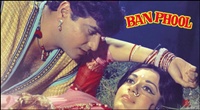
No One Killed Jessica Full HD Movie Download
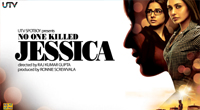
Seema Full HD Movie Download
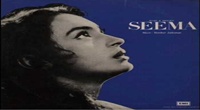
The Hidden Eye- Teesri Aankh Full HD Movie Download

Patth Full HD Movie Download
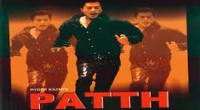
Film Hi Film Full HD Movie Download
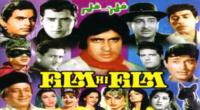
Insaaniyat (1955) Full HD Movie Download
.jpg)
Body Parts Full HD Movie Download
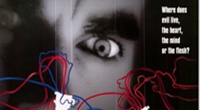
Utt Pataang Full HD Movie Download
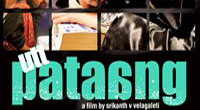
Satya In Love Full HD Movie Download

Eno Onthara Full HD Movie Download
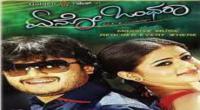
Rajakali Amman Full HD Movie Download
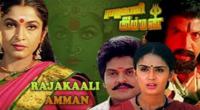
Sati Sukanya Full HD Movie Download
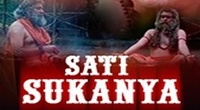
Sri Raja Rajeshwari (Telugu) Full HD Movie Download
.jpg)
Shakti-The Devine Force Full HD Movie Download
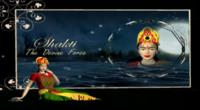
Anand Full HD Movie Download

Success Full HD Movie Download

Pranam Full HD Movie Download
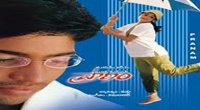
Charminar Full HD Movie Download
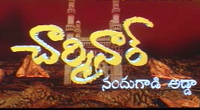
Takkari Donga Chakkani Chukka Full HD Movie Download
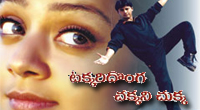
Sawan Ki Ghata Full HD Movie Download

Download latest Movie from bollywood
- 1> baaghi 3
- 2> THE SKY IS PINK MOVIE FULL STORY AND REVIEW
- 3> Luka Chuppi
- 4> TO ALL THE BOYS I’VE LOVED BEFORE
- 5> Kabir Singh
- 6> Street Dancer 3D
- 7> Simmba
- 8> Gone Girl
- 9> The Girl Who Lived
- 10> Ludo
- 11> DILWALE DULHANIA LE JAYENGE
- 12> GUILTY
- 13> The Godfather
- 14> Adventures of Rusty
- 15> Sooryavanshi
- 16> Satyameva Jayate 2
- 17> Thappad
- 18> Bhool Bhulaiyaa 2
- 19> KGFChapter 2
- 20> Mardaani 2
- 21> Pinjar
- 22> Shivaji maharaj
- 23> Ek Villian 2
- 24> Hungama 2
- 25> Divergent
- 26> Mumbai Saga
- 27> The Internship
- 28> HIT (telugu)
- 29> Panga
- 30> The perfect date
- 31> 16 December
- 32> Gopala Gopala (Telugu)
- 33> Brahmastra
- 34> Gangubai Kathiawadi
- 35> Manmadhudu
- 36> Nenu local
- 37> Mahanati
- 38> Shatamanam bavathi
- 39> Lagaan
- 40> After
- 41> MOM
- 42> Shamshera
- 43> Raguvaran BTech
- 44> Khakee
- 45> The villain
- 46> OM
- 47> Mr. perfect
- 48> Bueatifull mind
- 49> Hichki
- 50> Gabbar Singh
- 51> Jogi
- 52> Before Sunrise
- 53> Before Sunset
- 54> Before Midnight
- 55> The Big Bull
- 56> Top Gun: Maverick
- 57> The Purge
- 58> The Sky is Pink
- 59> Laxmmi Bomb
- 60> Sadak 2
- 61> Sufna
- 62> Prithviraj
- 63> PK
- 64> Coolie No 1(2020)
- 65> Black Widow
- 66> Dear Zindagi
- 67> Dil Bechara
- 68> PHIR HERA PHERI
- 69> WAR
- 70> Dostana
- 71> RRR: Roudram Ranam Rudhiram
- 72> Maidan
- 73> Dabbang 3
- 74> Chhalaang
- 75> life as we know it
- 76> SherShaah
- 77> Sandeep Aur Pinky Faraar
- 78> Event Horizon
- 79> 83
- 80> Radhe: Your Most Wanted Bhai
- 81> Gunjan Saxena: The Kargil Girl
- 82> Mr India
- 83> Vivah
- 84> Anokha Bandhan
- 85> Ghost
- 86> Bhoot: Part One - The Haunted Ship
- 87> Haseen Dilruba
- 88> Laal Singh Chaddha
- 89> Qismat
- 90> Rajput
- 91> Drive
- 92> Dil Chahta Hai
- 93> Dil Ki Baazi
- 94> Dil Ka Rishta
- 95> Teesri Manzil
- 96> Dil
- 97> Love Aaj Kal
- 98> Khaali Peeli
- 99> Bunty Aur Babli 2
- 100> Atrangi Re
- 101> Gulabo Sitabo
- 102> Jodi
- 103> Suraj Pe Mangal Bhari
- 104> Deewana
- 105> Attack
- 106> Sardar Udham Singh
- 107> Toofan
- 108> THE LOVEBIRDS
- 109> Jersey
- 110> Ginny Weds Sunny
- 111> Thalaivi
- 112> Shiddat
- 113> Angels vs Zombies
- 114> Koi Mil Gya
- 115> Thank God
- 116> Bhuj: The Pride of India
- 117> Hum Aapke Hain Kaun
- 118> The Platform
- 119> Bird Box
- 120> Roohi Afzana
- 121> Torbaaz
- 122> Nikamma
- 123> World War Z
- 124> Extraction
- 125> Train to Busan
- 126> Life of Pi
- 127> SHAADI MEIN JROOR AANA
- 128> Himmat Aur Mehnat
- 129> To All The Boys: P.S. I Still Love You
- 130> Mimi
- 131> Good Newwz
- 132> Shubh Mangal Zyada Saavdhan
- 133> Raabta
- 134> Harry Potter and the Philosopher's Stone
- 135> Harry Potter and the Chamber of Secrets
- 136> Chhapaak
- 137> War of the Worlds
- 138> Harry Potter and the Prisoner of Azkaban
- 139> Harry Potter and the Goblet of Fire
- 140> MURDER MYSTERY
- 141> Shakuntala Devi
- 142> Bachchan Pandey
- 143> Jayeshbhai Jordar
- 144> Sheer Qorma
- 145> Saina
- 146> 'O' Pushpa I hate tears
- 147> Kedarnath
- 148> MS Dhoni The Untold Story
- 149> Chhichhore
- 150> Badhaai Ho
- 151> Unstoppable
- 152> Oz the Great And Powerful
- 153> The Girl on the Train
- 154> Haathi Mere Saathi 2020
- 155> The Conjuring: The Devil Made Me Do It
- 156> Gandhi Se Pehle Gandhi
- 157> The Song of Scorpions
- 158> Srimanthudu
- 159> Hello Guru Prema Kosame
- 160> Beauty and The Beast
- 161> Black Panther
- 162> Charlie and the Chocolate Factory
- 163> Bole Chudiyan
- 164> Fidaa
- 165> Duvvada Jagannadham
- 166> Bruce Lee: The Fighter
- 167> Hyper
- 168> Yaara
- 169> Red (2020)
- 170> Shivam
- 171> That Is Mahalakshmi
- 172> Nishabdham
- 173> Aashram 2020 web series
- 174> Laxmii
- 175> Mismatched
- 176> STUDENT OF THE YEAR 2
- 177> NAIL POLISH
- 178> Ramprasad Ki Tehrvi
- 179> KAAGAZ
- 180> 12 o Clock
- 181> The Power
- 182> bolo hau
- 183> Tribhanga
- 184> JAMUN
- 185> Madam Chief Minister
- 186> Maasaab
- 187> Aadhaar
- 188> Tanhaji
- 189> Bhaagi 3
- 190> Bhootnath
- 191> MALANG
- 192> Jai Mummy Di
- 193> Haathi Mere Saathi 2021
- 194> Shakeela
- 195> Unpaused
- 196> Annayya
- 197> Vamsoddharakudu
- 198> Mrugaraju
- 199> Narasimha Naidu
- 200> Sankranti
- 201> Manasu Maata Vinadhu
- 202> Anjaane
- 203> Apaharan
- 204> Bachke Rehna Re Baba
- 205> Bewafaa
- 206> Roohi
- 207> Radhe
- 208> Zindagi Khoobsoorat Hai
- 209> Yeh Mohabbat Hai
- 210> Yeh Kya Ho Raha Hai?
- 211> The Tomorrow War
- 212> DehradunDiary
- 213> Meri Shaadi Karaoo
- 214> Matruu Ki Bijlee Ka Mandola
- 215> No One Killed Jesica
- 216> Aag Ka Goola
- 217> Eight Million Dollars
- 218> Three Hundred
- 219> Cats and Dog
- 220> Decoy
- 221> Gold Rush
- 222> You Have Got Mail
- 223> Final Destination three
- 224> Tofan
- 225> Jungle
Request for Download movie Cabaret
- Bollywood movies
- Latest Bollywood movies
- Download all bengali movies
- Download all bhojpuri movies
- Download all english movies
- Download all gujarati movies
- Download all hindi movies
- Download all kannada movies
- Download all malayalam movies
- Download all marathi movies
- Download all oriya movies
- Download all punjabi movies
- Download all tamil movies
- Download all telugu movies
- Bollywood action movies
- Bollywood adventure movies
- Bollywood animation movies
- Bollywood classical movies
- Bollywood comedy movies
- Bollywood crime movies
- Bollywood devotional movies
- Bollywood documentary movies
- Bollywood drama movies
- Bollywood family movies
- Bollywood fantasy movies
- Bollywood historical movies
- Bollywood history movies
- Bollywood horror movies
- Bollywood musical movies
- Bollywood mystery movies
- Bollywood mythological movies
- Bollywood patriotic movies
- Bollywood romance movies
- Bollywood romantic movies
- Bollywood sci-fi movies
- Bollywood social movies
- Bollywood spiritual movies
- Bollywood sports movies
- Bollywood suspense movies
- Bollywood thriller movies
- Bollywood war movies
- Hot actress list
- Hot gujarati actress list
- Hot tamil actress list
- Hot bhojpuri actress list
- Hot assam actress list
- Hot bihari actress list
- Hot jammu and kashmir actress list
- Hot gujarati actress list
- Hot haryana actress list
- Hot konkani actress list
- Hot marathi actress list
- Hot odia actress list
- Hot punjabi actress list
- Hot rajasthani actress list
- Hot kannada actress list
- Hot malayalam actress list
- Hot telugu actress list
- Hot tulu actress list
- Hot Actress list from Indian city
- Hot actress list from ahmedabad
- Hot actress list from alappuzha
- Hot actress list from bangalore
- Hot actress list from bangalore
- Hot actress list from bhopal
- Hot actress list from chandigarh
- Hot actress list from chennai
- Hot actress list from guwahati
- Hot actress list from hyderabad, india
- Hot actress list from indore
- Hot actress list from jaipur
- Hot actress list from kannur
- Hot actress list from kochi
- Hot actress list from kolkata
- Hot actress list from kollam
- Hot actress list from kottayam
- Hot actress list from kozhikode
- Hot actress list from lucknow
- Hot actress list from madurai
- Hot actress list from mangalore
- Hot actress list from mumbai
- Hot actress list from mysore
- Hot actress list from new delhi
- Hot actress list from patna
- Hot actress list from pune
- Hot actress list from thiruvananthapuram
- Hot actress list from thrissur
- Hot actress list from tiruchirappalli
- Hot actress list from vijayawada
- Hot actress list from visakhapatnam
- All Bollywood Movies
- Bollywood Celeb
- >Art Director
- >Audiography
- >Background Music
- >Banner
- >Choreographer
- >Cinematographer
- >Costume Designer
- >Dialogue Writer
- >Director
- >Distributor
- >Editor
- >Executive Producer
- >Hair Stylist
- >Lyricist
- >Music Director
- >Photographer
- >Playback Singers
- >Presenter
- >Producer
- >Production Company
- >Production Designer
- >Screenplay
- >Singer
- >Sound
- >Actor
- >Story Writer
- >Studio
- >Video Director
- >Miscellaneous
- >Publicity (pro)
- >Web Creator
- >Production Labs
- >Publicity Design
- >Publicity Stills
- >Writer
- >Miscellaneous Artists
- >Visual Effects
- >Reporter
- >Music Company
- >Shooting Studios
- >Picturised On
- >Line Producer
- >Co Producer
- >Asst Director
- >Casting Director
- >Cinematography
- >Choreography
- >Dialouge
- >Editing
- >Lyrics
- >Music
- >Story
- >Playback Singer Female
- >Playback Singer Male
- >Actor In A Comic Role (male/female)
- >Child Artiste
- >Ensemble Cast
- >Actor Popular Choice (male)
- >Actor Popular Choice (female)
- >Sa Re Ga Ma Pa Song Of The Year
- >Actor In Supporting Role
- >Actress In Supporting Role
- >Actor In Leading Role
- >Art Direction
- >Actress In Leading Role
- >Sound Recording
- >Costume Design
- >Special Effects
- >Action
- >Actor In A Negative Role
- >Lifetime Achievement Award
- >Cinematic Exellence (director)
- >Cinematic Exellence (male)
- >Cinematic Exellence (female)
- >International Male Icon
- >International Female Icon
- >Actor In A Supporting Role (male)
- >Actor In A Supporting Role (female)
- >Actor In A Comic Role
- >Playback Singer (male)
- >Playback Singer (female)
- >Most Promising Debut (female)
- >Most Promising Debut (male)
- >Most Promising Director
- >Sound Design
- >Lifetime Jodi
- >Marketed Film
- >Jury Award For Best Actor
- >Jury Award For Best Actress
- >Jury Award For Best Film
- >Jury Award For Best Director
- >Playback Singer(male)
- >Lifetime Acheivement Award (male)
- >Excellence Award
- >Jodi Award
- >Performer Of The Year
- >Presented By
